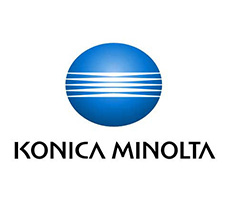Notes
(*1) A management strategy to ensure that identified critical operations are not interrupted in the event of a disaster, to resume critical functions within the target recovery time if business activities are interrupted, and to protect the company from loss of customer transactions to competitors, loss of market share, and damage to corporate reputation resulting from business interruption. Measures to be implemented include the development of backup systems, securing backup offices, speeding up safety confirmation, securing personnel, and replacing production facilities (Business Continuity Plan: BCP).
Scenario Analysis of Climate-Related Risks and Opportunities
*This case study is published based on information as of March 2023.
Konica Minolta, Inc.
| Publication date | April 19, 2023 (Posted on December 25, 2023) |
|---|---|
| Sector | Industrial and Economic Activities |
Company Overview

Konica Minolta, Inc. is a Japanese manufacturer of electrical equipment whose products and services include MFPs, commercial and industrial printers, IT solutions, industrial inkjet, medical products (healthcare), and measuring equipment.
Climate Change Impacts
The Paris Agreement provides a framework for the world to move more quickly and ambitiously to build a low-carbon society. There are also concerns that the transition may not go as smoothly as expected and that significant impacts of climate change may become apparent in many parts of the world. If the physical effects of climate change materialize and damage the global environment, it could cause economic and financial disruptions.
Adaptation Initiatives
In 2018, we endorsed the recommendations of the Task Force on Climate-related Financial Disclosures (TCFD).
We identified business risks that could adversely affect our financial performance in the future as well as business opportunities that could be created by proactively addressing challenges in climate change, under the following two climate scenarios.
- If the average global temperature increase is kept below 2°C and a low-carbon global society is achieved
- If the average global temperature increase exceeds 2°C and the predicted physical impacts of climate change materialize
The scenario analysis was conducted through the following process.
- Identification of target business areas for climate scenario analysis
- Identification of significant climate-related risks and opportunities
- Reviewing existing scientific scenarios for climate change
- Reviewing and clearly defining risks and opportunities for the scenarios and their financial impacts
- Reviewing the direction, policies, and strategies for future responses
One physical risk identified is the potential for instability in the procurement of paper raw materials, which could lead to loss of business opportunities. Instability in the procurement of natural resources could also limit or temporarily halt the supply of raw materials and other resources, affecting factory operations. Furthermore, the Group's facilities and labor environment could be damaged, making it difficult for employees to perform their jobs, which could disrupt the supply chain and delay production and shipments.
As a response to the anticipated physical risks, we are expanding our Digital Workplace Business, which provides new digital solutions that do not rely on paper output. We are also working to secure multiple suppliers and examining alternative materials for raw materials with high stable supply risk.
In response to climate disasters, we are working to ensure a resilient supply chain system that produces and supplies products in the regions where they are needed, with multiple in-house production sites in Japan, Europe, and North America as bases for producing and filling printing toner and producing parts for consumables. In addition to identifying production and supplier sites with high water risk and planning countermeasures, we also formulated a BCP (*1) in preparation for the occurrence of a large-scale natural disaster.
On the other hand, as business opportunities, we believe that our solutions business can tap into societal demand for imaging IoT and sensing solutions to prevent the effects of abnormal weather and natural disasters and ensure preventive maintenance of infrastructure, as well as healthcare solutions that utilize radiography and ultrasound diagnostic imaging, which can be used at disaster medical care sites where demand is high.
Effects / Expected Benefits
Based on the results of the scenario analysis, we developed a management plan that anticipates business growth centered on DX by shifting from the conventional business model centered on MFPs, which account for a high percentage of sales, to an "as a service" model. We also decided to set "addressing climate change" as one of the five material issues to be addressed in our long-term management vision, and to bring forward the deadline for achieving "carbon minus" as a goal for addressing climate change to 2030.

